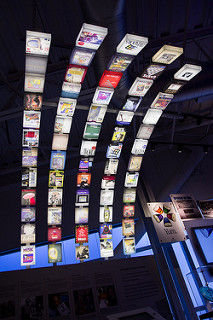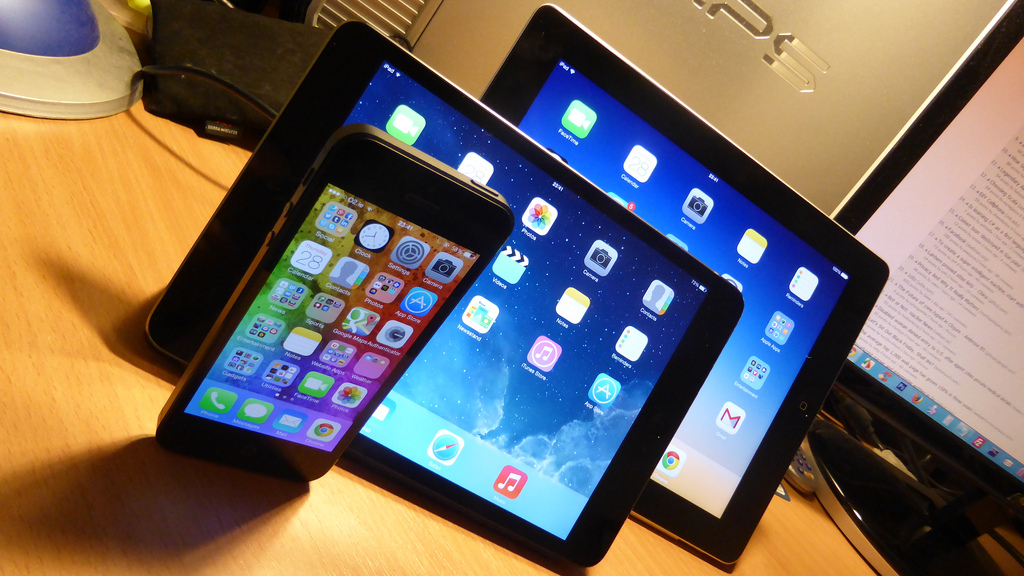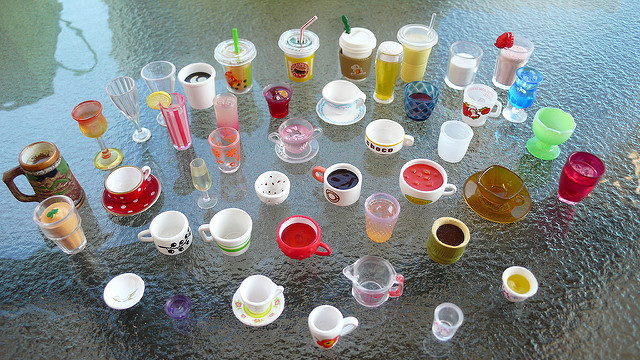Dating back to the time of vinyl records, the term “white label” still holds merit to this day and is growing in popularity. In a nutshell, a white label gives you permission to use the name of your brand on products another brand has created. The main benefit of this act is that you don’t have to develop the products yourself and instead take a shortcut to a complete product.
Today, white label production is mainly used for electronics, consumer products and, most importantly, software. This doesn’t come as a surprise, given the fact that the global market for SaaS is estimated to be greater than $37 billion in 2016!
When it comes to digital signage, including both software and hardware, white labeling has many advantages which at least make you consider it:
- A complete and professionally made product in your hands. A white label solution provides you with a product which has been expertly made and developed by professionals, giving you access to a market-ready product. An entire digital signage platform is already established, the only thing required from you is your brand name.
- Increase brand awareness and loyalty by simply placing your name in the vision of your customers. In a general sense, this is especially effective if your business offers multiple services and products. If those services and products prove to be effective and satisfactory, your clients’ loyalty will strengthen immediately and they will react more favorably to any future projects you might create.
- Save time and technical headaches. Once you choose a white label provider you can have your branded platform up and running in a matter of days, or at most weeks. This is a huge money and time saver. Nail-biting is also decreased as the frustration attached to investment and production are eliminated. Instead of digging through programming languages and handbooks, you only need to learn how the already-created product operates. Additionally, it frees you from maintaining a sizeable support center.
- Time and money are saved (at a cost we’ll discuss below). This allows you to white label multiple products and experiment with a variety of choices. If you dislike a product, you can easily shop around for other options based on your tastes, functionalities or intentions. If you wish to create something unique in the market, however, you don’t have that freedom.
- You are given a choice. With white labeling, you can see the complete product and immediately know if it fits your idea. In a way, it’s like playing a videogame where you get to see the final product before bringing it to real life. When you’re designing and producing a product yourself, you can only hope that the end result will match the image you had in your head.
- Increasing sales margins – Ultimately adding your brand can also mean increasing the sales margin. There are two simple reasons to explain this: a) Adding your brand can be translated into adding value; b) you will be buying licenses in higher volume/smaller price and selling it in lower quantities/higher price. c) Your service is detached from the service provider and as you know much better your customers you are the best positioned to tell what is the right selling price.
White labeling is often compared to creating your own product. Building from scratch, especially software, demands quite a bit of research, strategy and expertise. Which is why white labeling is a way to go when you are not a software company and your core competency lies in service. Create ideas with your clients and leave the tedious development task to the experts.
Buying from an official brand and then using or reselling a complete product is also a common option. Here’s the crux. You offer a accomplished product, your sales go up, but you feed loyalty to the brand you’re selling.
Co-branding is also an interesting opponent of white labeling, but in the end all of these have their benefits and flaws. It all depends on your individual plans and goals. Let’s check them out!
White labeling vs. creating your own product
Creating SaaS from scratch can be an elaborate process. As a clear example, let’s take a look at a standard digital display network – hardware with installed software.
On one side you have a choice of a complete display fed from the software which is immediately available. You can present its features to your customers and start selling at once. A question which may come up is what to do in case you need a specific feature and it is not supported by the potential vendor. Just straight ask him about it! If you need it, there is a fair chance others need it, too. Meaning many vendors will be open to hear you and eventually add custom features. In many cases an extra fee may be charged to cover the development of these added features, but still it will be far less than developing an entire new system.
On the other hand, if you choose to create a product from scratch, you will have the freedom to create it exactly how you want it. This freedom and a chance to reach perfection comes at the price of money, time and nerves you will surely need to invest.
The benefits of creating your product: The designing and detail are entirely up to you. You can create a completely unique product in the market. You can make the features you want and have them fit your ideas perfectly. This goes for now as well as the future.
The flaws of creating your product: You require more time and money, both of which you’ll invest heavily in if you want to have a single or even a variety of your own products in a shorter time-period.
Even if you wish to create your own product, white labeling can help. You gain knowledge about each product you white label: an experience you can use to gather information about creating your own unique product. Think of white labeling as a testing ground to see your own product in the future. If you go into the field of invention blindly, you’ll probably make the same mistakes others have made before you. By the time you do go all the way and create your own, you already have a firm customer base to immediately sell to.
Creating a digital signage product from scratch
When it comes to hardware in digital signage, by now they are fairly generic. The equipment such as displays, players and other minor components don’t vary too much from one another. In terms of creating a unique product, you might only adjust minor components but there really isn’t a need to invest extreme resources to create yet another set of displays. White labeling in this particular case may be a wise choice.
Software is a bit different as this is where digital signage really varies from one provider to another. In terms of Software-as-a-Service, there are many choices and ways to build and not to build your software. You need to explore the industry in great detail to evade making mistakes others have made: an aspect which white label can help you with, as we’ve mentioned.
The load of choices to make weights heavy on your shoulders, starting with the basic appearance of the software, its usability, style and where you see it going long-term. A common division is also the on-premise approach versus the cloud-based architecture of your software.
White labeling vs. non white label
So you have carefully chosen hardware and software, considering them from all angles before buying? You may think you might as well simply market this existing label. The route of going with your SaaS digital signage platform brand will equally save you time and money, but will not look as exclusive as a white label solution.
Using the standard SaaS brand is a valid choice, as you will leverage all the experience features and robustness aspects offered by a proven tool. You’re selling a product which has an established background and brand awareness. The main challenge here is safeguarding your customers from bypassing you and going direct to the SaaS provider after they have gained sizeable expertise in the system.
What to look for in a white label solution
By now you should already be convinced about the advantages of using a white label platform. So let’s think about the important criteria you should be looking for in a digital signage white label provider.
- Custom URL – The platform is able to integrate your URL directly to the white label platform.
- Branding – This is a must have! Nevertheless, many providers lack offering it. You should be able to add your name and logo in such a way customers will see the platform as yours.
- Custom email communication – Most platforms will send you, or your users email with important information such as reports, warnings, errors, etc. You need to ensure these emails are sent using your domain.
- Custom Application – Often forgotten, keep in mind that the player application also needs to be customized with your brand and logo. This will become visible in many different situations. Having a different name there will just break the white label magic.
- Avoid redirects and links that may contain the original platform name – Some poor white label implementations may leave behind backlinks to the original platform provider, or even redirect to it. This rubs it right under the user’s nose that the platform is actually not yours. Ensure the white label solution offers you full coverage as you may not want your customers bypassing you and looking directly at your provider.
Finding a digital signage provider who can offer you all these features is not easy. When we started offering white labeling at our customers’ requests we compared what’s out there. As a matter of fact there aren’t many. We learned and hear it again and again from our customers that OnSign TV is one of the few and probably the best digital signage white label implementation available. Get to know the OnSign TV white label solution.
Summary: To white label or not to white label?
- White labeling can provide you with a complete product, saving you time and money required for designing and creating a product yourself. It can also grant you insight into creating a unique product in the future.
- White labeling saves you time and money to market. Where you would need months to develop a product that is ready to use and needs continuous improvement and support, all you need to do is to make a purchase.
- White labels can help you sell your digital signage service for a higher price.
- Buying from an official brand grants you access to an established brand background and a product which is more likely to sell based on reputation.
- The flaw of selling a branded product is building loyalty to that brand not yours. Your own brand will be less affected by the results.
- White label is the way to go once you have your own brand you want to invest in. It may require a bit more investment compared to traditional SaaS, but for sure it will pay off as you grow your business.
If you wish to learn more about white label, do not hesitate to contact us.
Images by Sean MacEntee, Atomic Taco and Kira.










